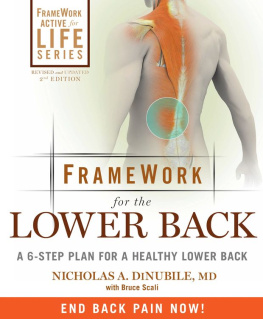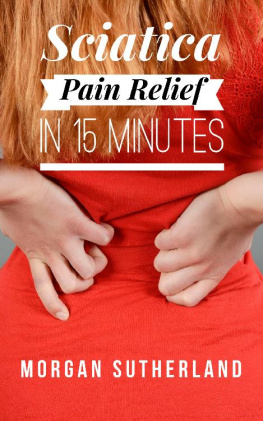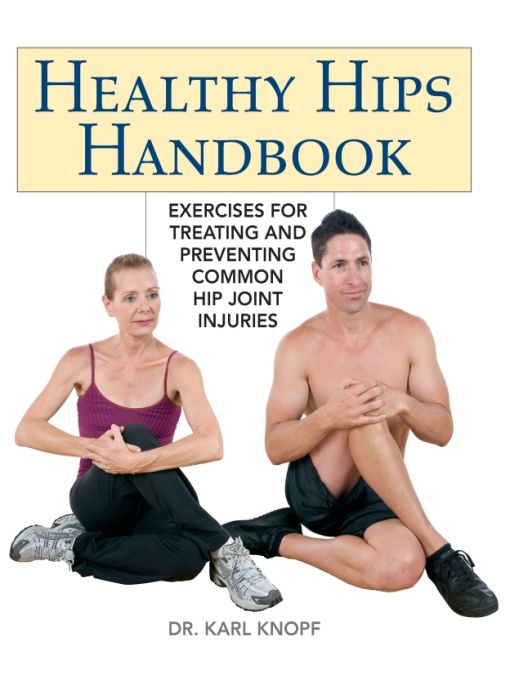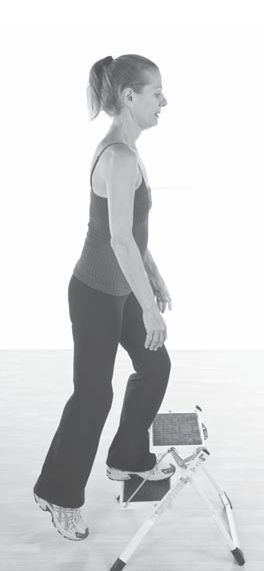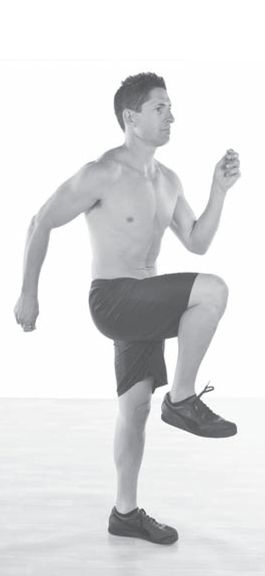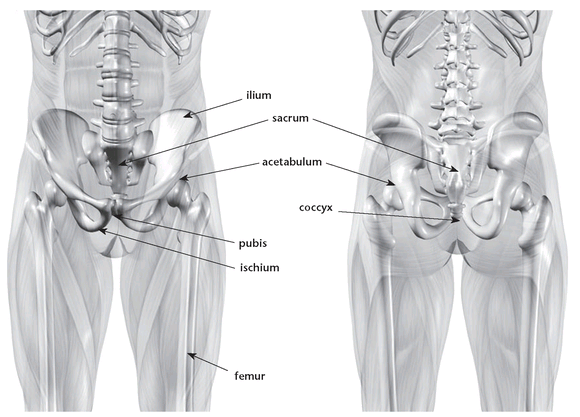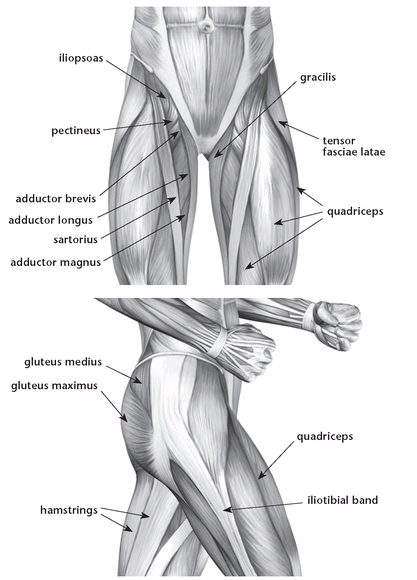Table of Contents
part 1
getting started
introduction
The hip plays an important role in many everyday activities, from sitting down to climbing stairs to bending over and touching your toes. The hip joint withstands forces about one-third of your body weight while youre standing, three times your body weight when you walk up stairs, and increases significantly to four times your body weight when you run. This means anyone, regardless of age or fitness level, may experience a hip problem at some point in their lives.
The pelvis supports the spine and trunk and transfers their weight to the lower limbs. The pelvis is the anchor for many torso muscles as well as leg muscles. The hip joint is formed where the neck of the femur (upper leg bone) connects with the pelvis; the hip is a deep ball-and-socket joint that is very stable and capable of carrying heavy loads. When we look at the anatomy of the hip region, well see the interconnectedness of the pelvic region, low back and upper leg. Bones intersect, muscles cross over each joint area, and nerve roots are very close to each other.
The thigh, hip and pelvis area generally have less incidence of injuries than do the knee and ankle. Yet, the hip and pelvic area do suffer a great deal of trauma, bruises and chronic misuse, not to mention even occasional abuse. Unfortunately, most people dont feel the effects of the misuse and abuse until its too late.
When we discuss hip problems, were referring to the tendons, ligaments, bursa, joint articulations and muscles of the hip area. Healthy Hips Handbook is designed to help prevent a hip problem for some and, for those of you with existing hip problems, provide post-rehabilitation exercises that you and your health-care provider can select to best meet your needs. The focus of this book is to encourage you to take time to rethink your motions and to better understand that the structure under your skin is not invincible. What you do today has a significant bearing on how youll feel tomorrow. As one former professional athlete said late in life, when he was limping around, If I knew I was going to live this long, I wouldve taken better care of myself! When were young, we think nothing will ever happen to us, and if it does some doctor will just fix it. While medical science is wonderful, nothing is ever as good as the original. Please do whatever is necessary today to maintain your bodys warranty.

Author Karl Knopf makes some adjustments.
anatomy of the hip joint
Understanding how the hip functions will provide insight into how to better care for it. Often called the workhorse of the joints, the hip is a ball-and-socket joint: the head of the upper leg is the ball and where it connects inside the pelvis is the socket.
This design allows for a very diverse set of actions, including flexion (bringing your knee to your chest), extension (swinging your leg behind you), adduction (bringing your legs together), abduction (raising your leg to the side), circumduction (circling your leg) and rotation. These actions are vital in the activities of daily living, ambulation, and recreation and sports.
Bones and Joints
Although the hip joint is similar to the shoulder joint in design, the hip joint is structurally more stable and better protected. The neck of the upper leg bone (the femur) rests deep inside the pelvis, whereas the shoulder joint is like a golf tee lying on its side next to a golf ball, with its structure held in place by bands called tendons and ligaments.
The large, flat, irregular-shaped pelvis is the supporting structure of the hip joint and made up of a ring of three bones: the ilium, ischium and pubis. At the base of the spine are the sacrum and the coccyx; as the human ages, these two fuse with the rear of the pelvis. The pelvis provides a solid insert for the leg to connect to the upper body, to support the spine and to transfer the load to the legs. This solid base serves as the origin and insertion point for many muscles. The female pelvis is wider than the male pelvis and designed for child bearing, so the shape of a womans hip is different from a mans.
The actual joint is where the ball of the upper leg, or femur, fits into the acetabulum, or socket, deep within the pelvis. This is what provides the hip joint with the most support. The rim of the joint is surrounded by a protective sheath called the glenoid labrum, or fibrocartilage; cartilage covers the head of the femur. The capsule is lined with synovial membrane and several ligaments. The synovial membrane provides lubrication, as do several fluid-filled sacs called bursas. The ligaments provide additional support. The iliofemoral ligament is the strongest attachment in the human body. Its primary functions are to prevent hyperextension of the hip, limit external rotation of the hip and limit adduction of the femur. The iliofemoral ligament also limits adduction of the femur as well as excessive internal rotation of the hip. The pubofemoral ligament prevents excessive abduction of the femur. The joints design, with its bone structure, ligaments and muscular attachments, makes the hip the powerhouse joint of the body.
Muscles
Muscles around the hip joint help take some of the load off the joint structure itself. In addition, they support your body weight and absorb the shock of movement.
The gluteal region is composed of the buttocks and hip area. Several muscles make up this region. The gluteus maximus, as the name implies, is the biggest part of your rear end. This powerful muscle extends the upper leg and laterally rotates the thigh. If you place your hand on your rear end and perform a squat, youll feel your gluteus maximus engaging. The gluteus medius is a medium-sized muscle in your rear end; its used for abduction and internal rotation of the thigh. A yet smaller portion of the rear end, the gluteus minimus internally rotates the thigh and helps in abducting the thigh.
Major bones of the hips
Major muscles that affect the hips; note that some muscles (such as the obturators and piriformis) lie beneath large surface muscles such as the gluteus maximus
Other muscles play a role in the hip joint:
PiriformisThis small, intrinsic muscle lies deep within the hip area. It externally rotates the thigh and assists in extending and abducting it.



![Dorian Ritter (2023) - The Strength Training Workouts Bible for Seniors 60+: [7 in 1] The Most Complete Guide of 200+ Simple Exercises that Elderly of Any Level Can Do Step by Step at Home](/uploads/posts/book/451362/thumbs/dorian-ritter-2023-the-strength-training.jpg)

